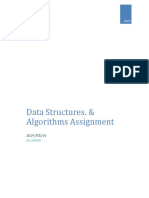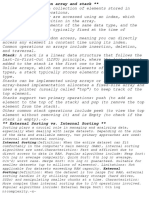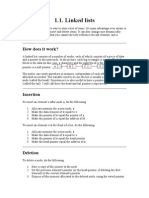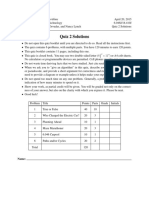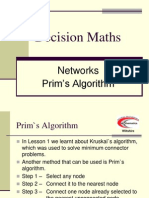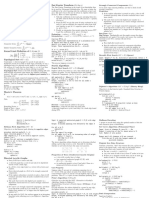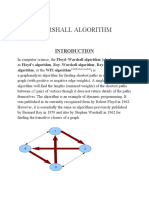0% found this document useful (0 votes)
9 views17 pagesData Structure Final Preparation
The document outlines key data structures and algorithms essential for a Data Structure final preparation, including arrays, linked lists, stacks, queues, trees, and graphs, along with their operations and complexities. It also covers various sorting and searching algorithms, recursion, and hash tables, providing definitions, characteristics, and time complexities. Additionally, it details the exam format, including multiple-choice questions, fill-in-the-blanks, and pseudocode requirements.
Uploaded by
Heng DaluxCopyright
© © All Rights Reserved
We take content rights seriously. If you suspect this is your content, claim it here.
Available Formats
Download as PDF, TXT or read online on Scribd
0% found this document useful (0 votes)
9 views17 pagesData Structure Final Preparation
The document outlines key data structures and algorithms essential for a Data Structure final preparation, including arrays, linked lists, stacks, queues, trees, and graphs, along with their operations and complexities. It also covers various sorting and searching algorithms, recursion, and hash tables, providing definitions, characteristics, and time complexities. Additionally, it details the exam format, including multiple-choice questions, fill-in-the-blanks, and pseudocode requirements.
Uploaded by
Heng DaluxCopyright
© © All Rights Reserved
We take content rights seriously. If you suspect this is your content, claim it here.
Available Formats
Download as PDF, TXT or read online on Scribd
/ 17






